I wanted to try adding an egg to my country sourdough again. I’ve seen other bakers on IG post their bakes and some of them achieve quite incredible rise and open crumb when adding an egg to their otherwise lean dough recipes. Then again, these same bakers always post super open crumb anyways, so who knows if the addition of the egg adds to this or just adds to the rise. When adding the egg one has to compensate for the water in the egg (74%) and reduce the water used to make the dough.
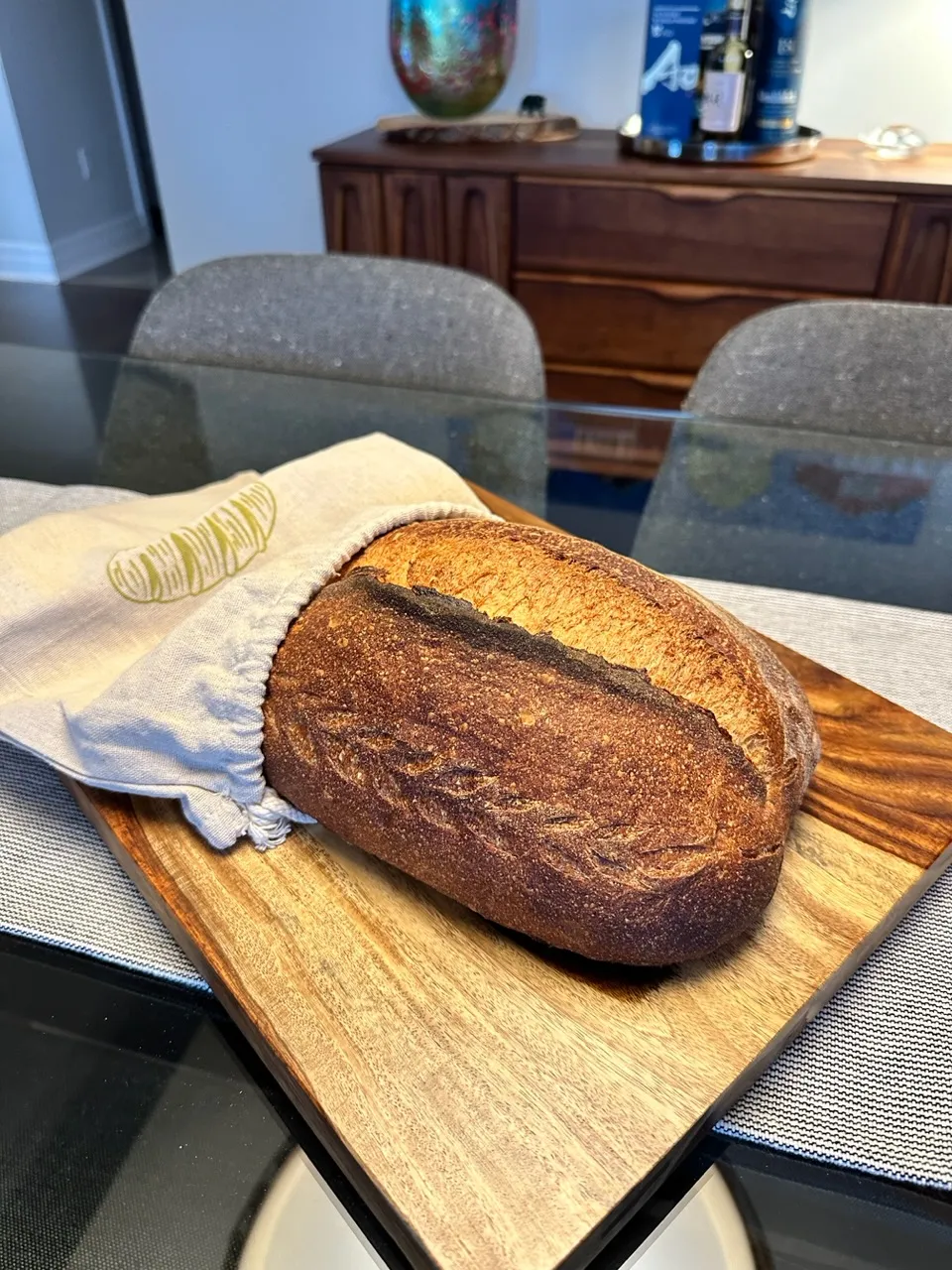
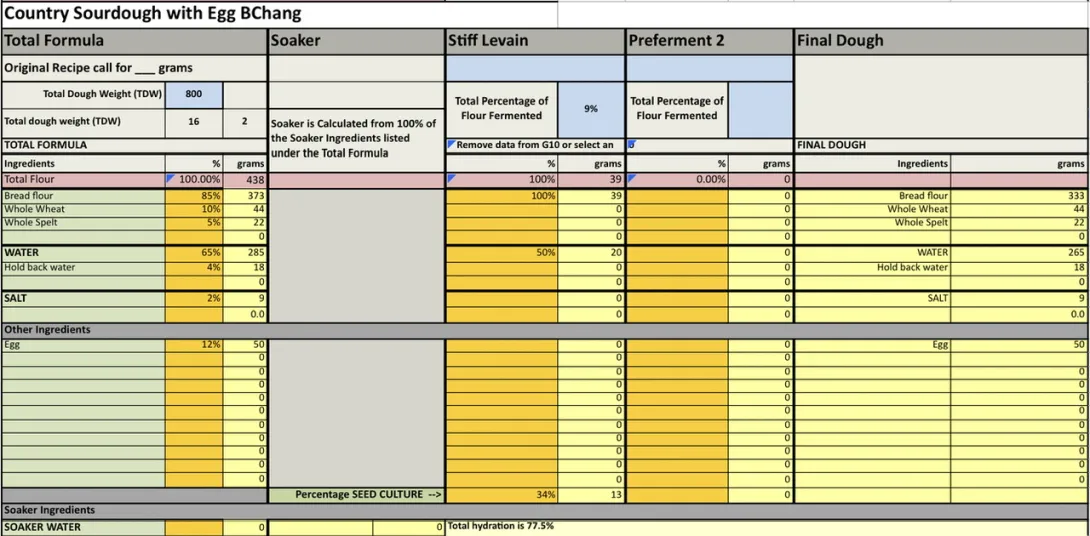
Overnight levain
Ferment 75°F overnight
In the morning mix egg and 265 g water. Add salt and all the stiff sweet levain. Break levain into small pieces.
Add whole wheat and whole spelt flours. Then finally add bread flour and mix until no dry flour remains.
Fermentolyse for 20 mins.
Knead dough well until at least moderate gluten development, can use French folds or stand mixer. Bassinage remaining 18 g of hold back water.
Do a bench letter fold. Extract aliquot jar doughs one for rise and one for pH.
Every 30 mins thereafter do coil folds until the dough is strong and holds its shape well. Since I used my Ankarsrum Assistent and built good gluten during mixing, I only needed 3 coil folds.
Rest for the remainder of bulk until an aliquot jar rise of 40% the shape the dough. Follow the pH to ensure that the pH isn’t falling too much allowing gluten degradation.
Once shaped place in banneton. Allow further bench proofing until rise of 90-100% before either baking or overnight cold retard.
Pre-heat oven to 500°F with cast iron skillet in the oven and set up for open steam baking.
30 mins prior to baking, pour 1 L of boiling water into metal loaf pan with Sylvia towel and place on baking steel on the lowest rack of the oven.
Once oven reaches 500ºF turn dough out of banneton, brush excess rice flour off, score and then brush with water. Transfer to oven. Pour 250 mL of boiling water into the cast iron skillet on a high shelf, high enough that the dough have fully bloom. Drop temperature to 450ºF and bake with steam for 25 mins. Then vent oven and remove all steaming gear and drop temperature to 425ºF. Bake for another 25-30 mins rotating as needed.
After 10 mins at 425°F I dropped it to 400°F since it was browning nicely already. Then final 9 mins down to 350°F
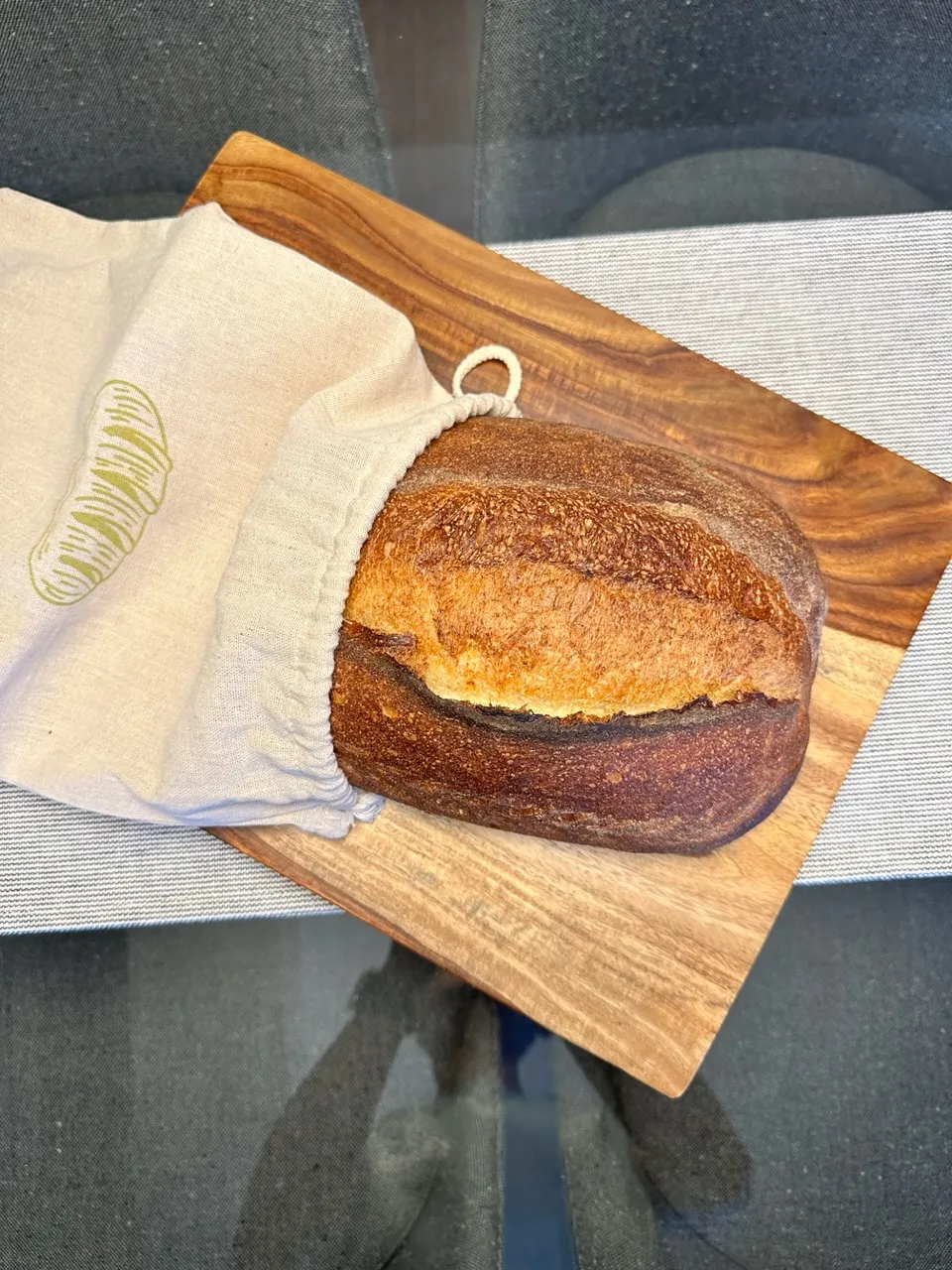
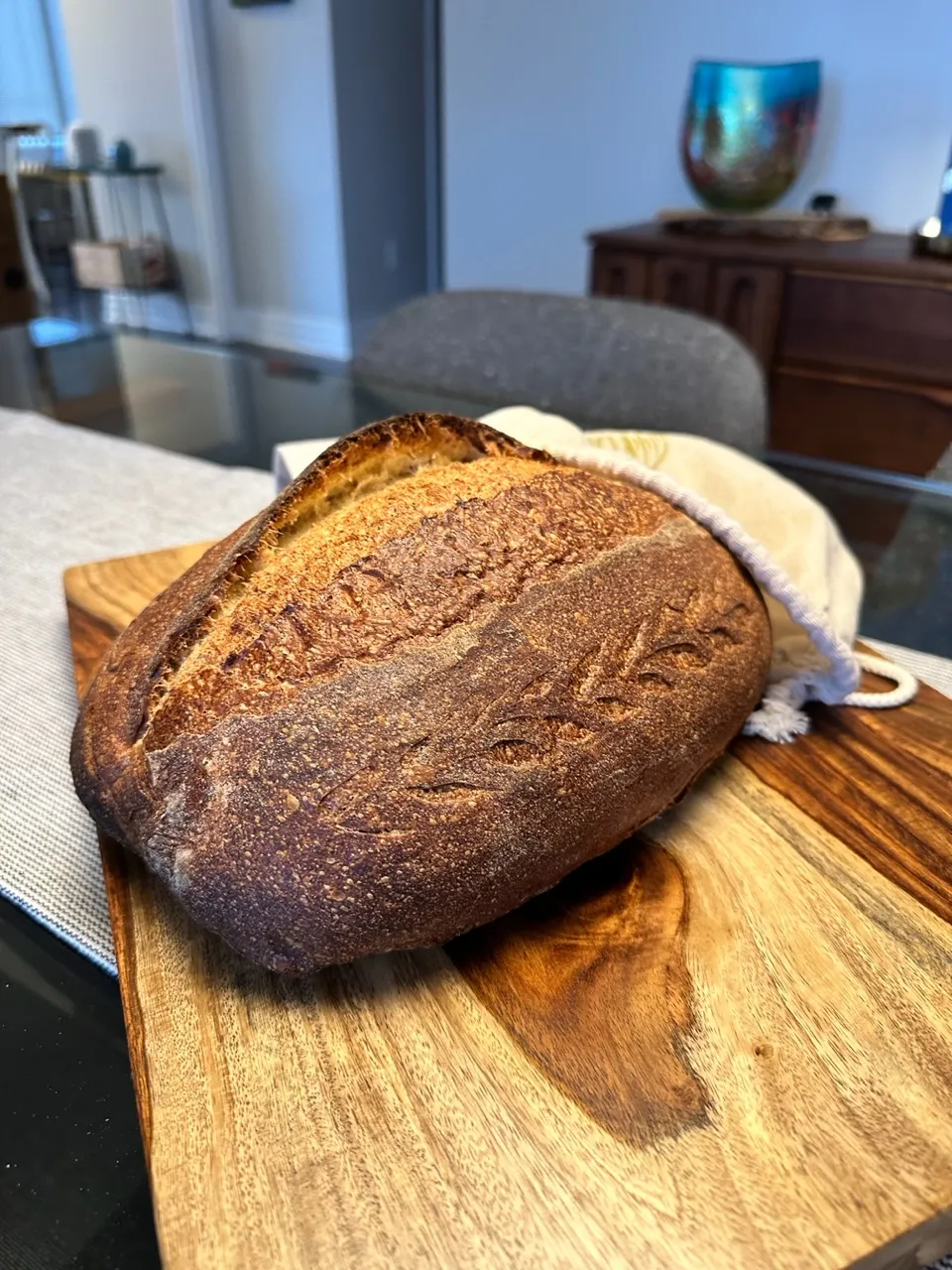
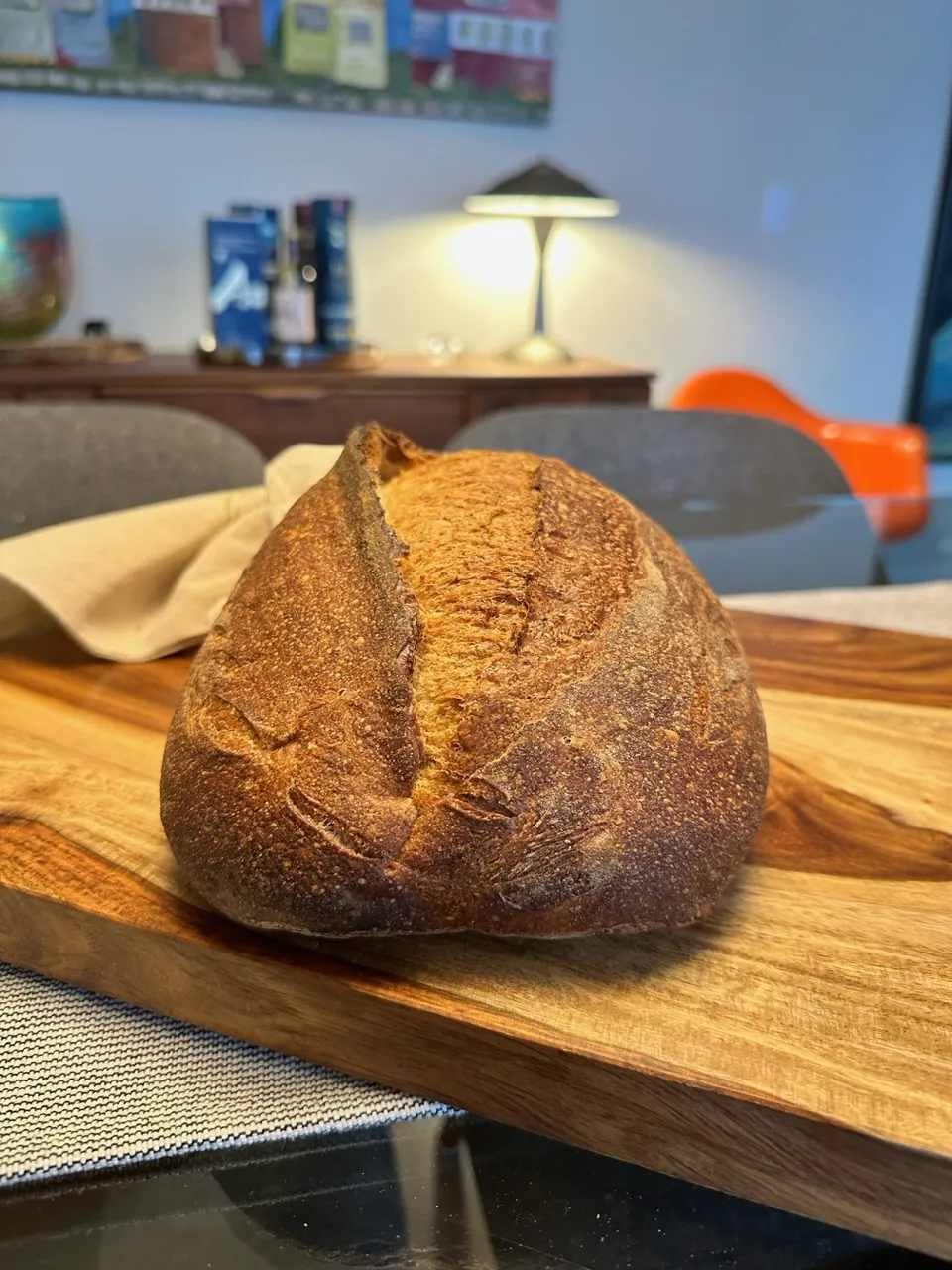
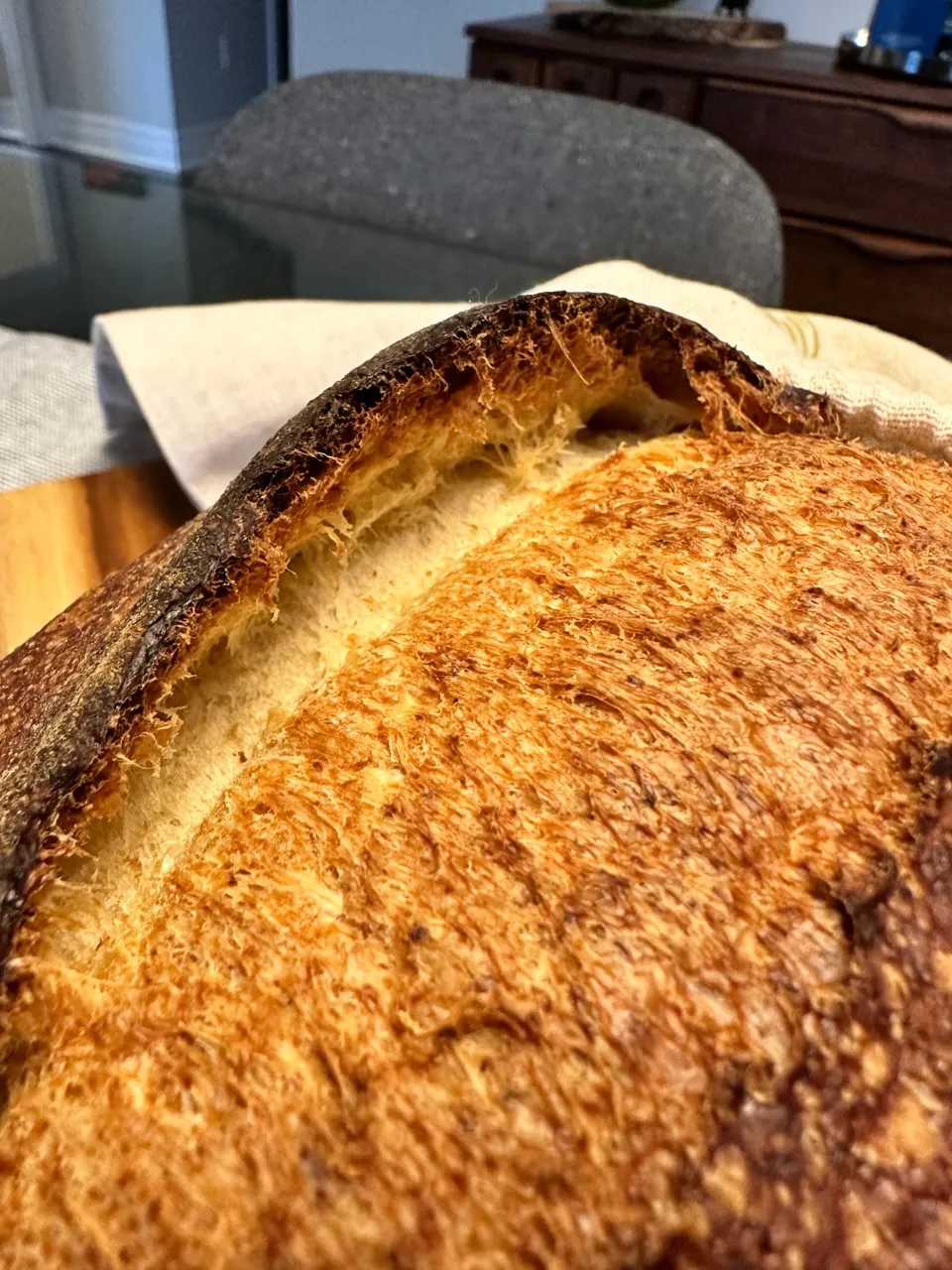
- Benito's Blog
- Log in or register to post comments
One aspect of this bake that I really liked is that despite the final rise of 100%, the pH at the time of the bake was only 4.25 with a total pH delta of 1.19. So the bread had a nice sour tang without it being too much. I think I will try this again and push the rise to 110-120%, given this bakes relatively high pH I think the gluten can handle it.
Nice loking crumb, Benny! A question about your final rise of 100% - was that still from the original aliquot jar, so 40% in bulk and 60% after, or a fresh jar for post bulk?
Lance
Great question Lance, I keep the aliquot jar going from the end of mixing. So that 100% rise is total from the beginning, I do not set up a new aliquot jar with shaping. So say 40% rise at shaping and then an additional 60% rise to bring it to 100% at time of bake.
Benny
This looks fantastic with a beautiful crust and crumb. I’ve added eggs many times to these types of bakes and like the softer crumb and flavor it adds. I don’t believe it had any effect on opening the crumb at all. You achieved a great open crumb so do you think it had any effect?
I think adding the egg has potential to help with open crumb. But a few variables in this bake. I used to only use hand mixing but with the Ankarsrum Assistent I’ve been using it now so the gluten is more fully developed which can close the crumb. The pH seems to start higher with the addition of the egg and by the time the dough had risen 100% had only fallen to 4.25. I used to aim to bake by pH of 3.8-3.9 for this type of bread. So I think there is potential for a more open crumb if you allow this dough to ferment further so next time I’ll aim for a rise of 110-120% or if the pH falls to 3.8-3.9.
Benny
Benny - That's a beauty, nice scoring and ear. I like the inclusion of the WW and W/spelt, I'll bet it smells and tastes great.
Tony
Thank you Tony, it turned out quite well. I was a good tasting bread that I’ll make adjustments to and bake again.
Benny
Very nice Benny. DW gave me a useful tip when making her 100% whole-wheat sandwich loaf. Eggs have various sizes, so I weigh the egg and milk and then reduce that amount from the overall water weight. Worked great.
Cheers,
Gavin
Thank you Gavin. Yes eggs do come in different sizes for sure. I always buy large eggs and I used to weigh them every time I used them. Over time I found that they all weighed 50-52 g (not including the shell).
Benny
We must have bigger eggs down here :)
LOL maybe our extra large eggs are large down under.
Benny
Where "Large" means 51 g - 59 g https://en.m.wikipedia.org/wiki/Chicken_egg_sizes
It's funny that America's tiniest size is called Peewee
Australia's largest size is king sized, seems like Jumbo isn't enough for a royal visit. And oddly, not a category in the UK!
Wow that is quite the range of weights for your Large eggs Jon. I think ours are medium, large and extra large.
Benny
Whole eggs are around 80% water so after weighing multiply by .80 and add to liquid amount.
Interesting, I’ve seen quite a variation in water percentage in eggs, but they seem to average out to be around 74%. Regardless they certainly need to be accounted for in the hydration no matter if they are 74 or 80%. Thanks Ian.
Beautiful interior and exterior. I particularly like the pale colour of the crumb, and the lift too. Probably could eat many loaves of a bread like this!
Tell me - the stiff levain, did it have sugar in it? And I assume that you didn't do a cold retardation with this bread which is why there is a milder flavour?
-Jon
Thanks so much Jon for your kind words. This was just a stiff levain and had no sugar in it. I don’t like very sour breads and avoided the long cold retard in part because of that. I did have it in the freezer for almost an hour while the oven pre-heated though. Since switching to Alan’s starter which is fed white flour, I have found greater rise per pH fall than with my whole rye starter. In the past few days I have switched my whole rye starter over to bread flour. It has become much more active with this switch in the past two feeds. It will be interesting to bake with my updated starter. The final pH at the time of baking on this loaf was 4.25, this is much higher than I am used to getting for my country sd loaves in the past usually hitting pH of 3.9 and a rise between 70-90%.
Benny